 |
King of Chemicals Manufacturers |
Specifications, Properties, Uses, SDS of Magaldrate USP BP Ph Eur EP Grade Manufacturer Supplier Exporter Wholesale & Small Packs, CAS Number 74978-16-8. |
|
| King of Chemicals has several associated companies having accreditations like cGMP, GLP - FDA Approved Good Manufacturing Practice and Good Laboratory Practice of WHO standard, ISO-9001, ISO-14001, ISO/IEC 17025, ISO ISO-45000, HACCP, FSSC 220000, FSSAI, "REACH" Registered, Kosher & Halal Certified. e-CTD and DMF support can be made available if needed. We offer USP NF BP Ph Eur EP IP JP Analytical Reagent FCC Food Grade Chemicals & Nutraceuticals. | |
        |
|
Muby Chem Pvt. Ltd. is a several decades old group of companies, engaged in manufacturing, supplying, distributing, wholesale supplies of Magaldrate for actual users, including retail or small pack supplies for research and development work.
We supply fine and speciality chemicals, pharmaceutical excipients, mineral fortifiers in chemically pure, analytical reagent grade, IP BP USP Ph Eur EP JP and other pharmaceutical grade monograph including FCC Food grade chemicals and Nutraceuticals at best prices. We and/or our associated units have all the facilities to supply as per cGMP standard observing good manufacturing practice and good laboratory practice. We can assure low microbial count and also offer a test certificate for the same. We maintain warehouses across USA, India, and UAE. Our group exports to USA, Canada, Mexico, Argentina, Brazil, Chile, Korea, Malaysia, Thailand, Indonesia, Europe, and several other parts of the world. We supply in wholesale container loads to small pack of few grams. Solid products may be specified for it size and shape as desired by the buyer.
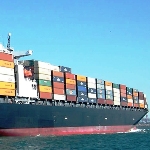

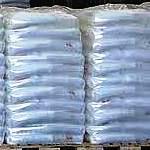
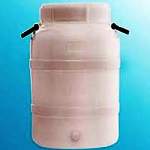
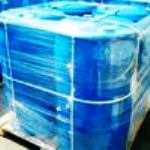
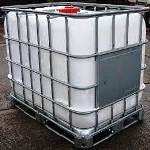
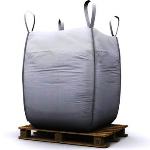
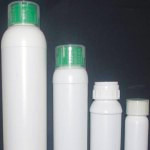
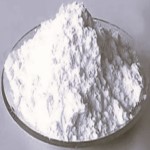
Magaldrate CAS Number 74978-16-8
For Properties Specifications Uses of Magaldrate Click Properties, Specifications, Uses, Price, Process of Magaldrate Manufacturer.
For For SDS MSDS Sheet of Magaldrate Click SDS Safety Data Sheet MSDS Sheet of Magaldrate Manufacturer.
The Properties, Specifications, Monograph and Uses of Magaldrate:
Magaldrate is a hydroxymagnesium aluminate complex that is converted rapidly by gastric acid into Mg(OH)2 and Al(OH)3, which are absorbed poorly and thus provide a sustained antacid effect.
Specifications of Magaldrate USP Grade:
Aluminum magnesium hydroxide sulfate --- Al5Mg10(OH)31(SO4)2-xH2O.
Aluminum magnesium hydroxide sulfate, hydrate --- CAS 74978-16-8.
Anhydrous --- 1097.38
Magaldrate is a chemical combination of aluminum and magnesium hydroxides and sulfate, corresponding approximately to the formula: Al5Mg10(OH)31(SO4)2-xH2O. It contains the equivalent of not less than 90.0 percent and not more than 105.0 percent of Al5Mg10(OH)31(SO4)2, calculated on the dried basis.
Identification:
A: Dissolve about 600 mg in 20 mL of 3 N hydrochloric acid, add 3 drops of methyl red and about 30 mL of water, and heat to boiling. Add 6 N ammonium hydroxide until the color just changes to yellow, continue boiling for 2 minutes, and filter: the filtrate responds to the tests for Magnesium.
B: Wash the precipitate obtained in Identification test A with 50 mL of hot ammonium chloride solution (1 in 50), then dissolve the precipitate in 15 mL of 3 N hydrochloric acid: the solution responds to the tests for Aluminum.
C: Its X-ray diffraction pattern in the d-spacings region below 0.257 nm (2.57 angstrom units) conforms to that of USP Magaldrate.
Microbial limits: It meets the requirements of the test for absence of Escherichia coli.
Loss on drying: Dry it at 200 for 4 hours: it loses between 10.0% and 20.0% of its weight.
Soluble chloride: Boil 1 g of it, accurately weighed, with 50.0 mL of water for 5 minutes, cool add water to restore the original volume, mix, and filter. To 25.0 mL of the filtrate add 0.1 mL of potassium chromate and titrate with 0.10 N silver nitrate until a persistent pink color is obtained: not more than 5.0 mL of 0.10 N silver nitrate is required (3.5%).
Soluble sulfate: A 2.5-mL portion of the filtrate obtained in the test for Soluble chloride shows no more sulfate than corresponds to 1.0 mL of 0.020 N sulfuric acid (1.9%).
Sodium: Transfer 2 g of it, accurately weighed, to a 100-mL volumetric flask, place in an ice bath, add 5 mL of nitric acid and swirl to dissolve. Allow to warm to room temperature, dilute with water to volume and mix. Filter, if necessary, to obtain a clear solution. Dilute 10.0 mL of the filtrate with water to 100.0 mL: the emission intensity of this solution, determined with a suitable flame photometer at 589 nm and corrected for background transmission at 580 nm, is not greater than that produced by a standard containing 2.2 micro-g of Na per mL, similarly measured (0.11%).
Arsenic: 8 ppm.
Heavy metals: Dissolve 330 mg in 10 mL of 3 N hydrochloric acid, filter if necessary, to obtain a clear solution and dilute with water to 25 mL: the limit is 0.006%.
Magnesium hydroxide content: To pass the test. --- between 49.2% and 66.6% of Mg(OH)2 is found, calculated on the dried basis.
Aluminum hydroxide content: To pass the test. --- between 32.1% and 45.9% of Al(OH)3 is found, calculated on the dried basis.
Sulfate content: To pass the test. --- between 16.0% and 21.0% of SO4 is found, calculated on the dried basis.
Specifications of Magaldrate BP Ph Eur Grade:
Al5Mg10(OH)31(SO4)2,xH2O --- 1097 --- CAS 74978-16-8 (anhydrous substance)
Action and use: Antacid.
DEFINITION
Magaldrate is composed of aluminium and magnesium hydroxides and sulfates. Its composition corresponds approximately to the formula Al5Mg10(OH)31(SO4)2,xH2O.
Content: 90.0 per cent to 105.0 per cent (dried substance). It contains a variable quantity of water.
CHARACTERS
Appearance: White or almost white, crystalline powder.
Solubility: Practically insoluble in water and in ethanol (96 per cent). It is soluble in dilute mineral acids.
IDENTIFICATION
A. Dissolve 0.6 g in 20 mL of 3 M hydrochloric acid, add about 30 mL of ;water and heat to boiling. Adjust to pH 6.2 with dilute ammonia, continue boiling for a further 2 min, filter and retain the precipitate and the filtrate. To 2 mL of the filtrate add 2 mL of ammonium chloride solution and neutralise with a solution prepared by dissolving 2 g of ammonium carbonate and 2 mL of dilute ammonia in 20 mL of water; no precipitate is produced. Add disodium hydrogen phosphate solution; a white, crystalline precipitate is produced which does not dissolve in dilute ammonia.
B. The precipitate retained in identification test A gives the reaction of aluminium.
C. The filtrate retained in identification test A gives& reaction (a) of sulfates.
TESTS
Soluble chlorides: Maximum 3.5 per cent.
To 0.5 g add 25 mL of dilute nitric acid and shake until completely dissolved. Add 10.0 mL of 0.1 M silver nitrate and 2 mL of ferric ammonium sulfate solution as indicator. Titrate with 0.1 M ammonium thiocyanate, shaking vigorously until a persistent brownish-red colour is obtained.
1 mL of 0.1 M silver nitrate is equivalent to 3.545 mg of Cl.
Soluble sulfates: Maximum 1.9 per cent.
Disperse 0.5 g in 25 ;mL of water, boil for 5 min, cool, dilute to 25.0 mL with water, mix and filter. To 2.5 mL of the filtrate, add 30 mL of water, neutralise to blue litmus paper with hydrochloric acid, add 3 mL of 1 M hydrochloric acid, 3 mL of a 120 g/L solution of barium chloride and dilute to 50 mL with water. Mix and allow to stand for 10 min. Any opalescence in the solution is not more intense than that in a standard prepared at the same time in the same manner using 1& mL of 0.01 M& sulfuric acid ;instead of 2.5 mL of filtrate.
Sulfates: 16.0 per cent to 21.0 per cent (dried substance).
Aluminium hydroxide: 32.1 per cent to 45.9 per cent (dried substance).
Magnesium hydroxide: 49.2 per cent to 66.6 per cent (dried substance).
Sodium: Maximum 0.10 per cent.
Atomic absorption spectrometry: To pass the test.
Loss on drying: 10.0 per cent to 20.0 per cent, determined on 1.000 g by drying in an oven at 200C for 4 h.
We also supply Magaldrate EP Grade.
The MSDS-SDS Hazard Statement of Magaldrate:
Magaldrate SDS, Safety Data Sheet
MSDS Sheet, Material Safety Data Sheet 12-Feb-25
1. Product Identification
Product Name & Other Names: Magaldrate or Aluminum magnesium hydroxide sulfate or Aluminium magnesium hydroxide sulphate.
CAS No.: 74978-16-8
EINECS EC Number: --
Relevant uses and uses advised against (if any): Industrial Manufacturing.
Suppliers: As per letterhead.
2. Hazards Identification
GHS, Globally Harmonized System Classification in accordance with 29 CFR 1910
Classification according to Regulation (EC) No 1272/2008
Not a hazardous substance or mixture according to Regulation (EC) No. 1272/2008.
This substance is not classified as dangerous according to Directive 67/548/EEC.
Labeling according to GHS & Regulation (EC) No 1272/2008
GHS Label Elements NONE |
Signal Word: None
Precautionary statements:
P261: Avoid breathing dust/fume/gas/mist/vapors/spray.
P262: Do not get in eyes, on skin, or on clothing.
P281: Use personal protective equipment as required.
P302+P352: IF ON SKIN: Wash with plenty of soap and water.
P304+P340: IF INHALED: Remove victim to fresh air and keep at rest in a position comfortable for breathing.
P305+P351+P338: IF IN EYES: Rinse cautiously with water for several minutes. Remove contact lenses, if present and easy to do. Continue rinsing.
P337+313: If eye irritation persists get medical advice/attention.
3. Composition/Information on Ingredients
Product Name & Other Names: Magaldrate or Aluminum magnesium hydroxide sulfate or Aluminium magnesium hydroxide sulphate.
CAS No.: 74978-16-8
4. First Aid Measures
Always seek medical advice after the first aid treatment.
Inhalation: If inhaled, remove to fresh air. If not breathing, give artificial respiration. If breathing is difficult, give oxygen. Get medical attention.
Ingestion: If swallowed, DO NOT INDUCE VOMITING. Give large quantities of water. Never give anything by mouth to an unconscious person. Get medical attention immediately.
Skin Contact: In case of contact, immediately flush skin with plenty of water. Cover the irritated skin with an emollient. Remove contaminated clothing and shoes. Get medical attention.
Eye Contact: Check for and remove any contact lenses. In case of contact, immediately flush eyes with plenty of water for at least 15 minutes. Get medical attention.
5. Fire Fighting Measures
Fire: Not considered to be a fire hazard.
On combustion, forms: Sulfur oxides, oxides of Aluminum and magnesium along with fumes.
Fire Extinguishing Media: Use water spray, alcohol-resistant foam, dry chemical or carbon dioxide. Use means suitable for extinguishing surrounding fire. Keep in mind that addition of water can cause the formation of sulfuric acid.
Special Information: In the event of a fire, wear full protective clothing and NIOSH-approved self-contained breathing apparatus with full face piece operated in the pressure demand or other positive pressure mode. At high temperatures under fire conditions, it may produce toxic or irritating fumes. Fire-extinguishing work is done from the windward and the suitable fire-extinguishing method according to the surrounding situation is used.
6. Accidental Release Measures
Personal precautions, protective equipment and emergency procedures: Avoid breathing dust/fumes/gas/mist/vapors/spray. Ensure adequate ventilation. Use individual protective equipment (waterproof boots, suitable protective clothing, safety glasses, etc.).
Environmental precautions: Do not let the product enter drains, soil or water sources.
Methods and materials used for containment Cleanup procedures and Storage: Contain spilled material. Cover spill with soda ash and mix. Cover with an inert, non-combustible absorbent material, (e.g. sand, earth, diatomaceous earth, vermiculite). Vacuum or sweep-up and remove to an approved disposal container.
7. Handling and Storage
Precautions for safe handling: Apply according to good manufacturing and industrial hygiene practices. Ensure proper ventilation. Wash thoroughly after handling. Do not drink, eat or smoke while handling. Avoid contact with skin, eyes and clothing. Minimize dust generation. Avoid breathing dust/fumes/gas/mist/vapors/spray. Keep container tightly closed. Avoid ingestion and inhalation. Use individual protective equipment (waterproof boots, suitable protective clothing, safety glasses, etc.).
Conditions for safe storage, including any incompatibilities: Store in cool, dry and ventilated area away from heat sources and protected from sunlight in tightly closed original container. Keep air contact to a minimum. Do not leave the material container open. Store protected from heat, sparks and ignition sources and incompatible materials. Avoid contact with skin and eyes. Avoid inhalation of dust/mist/vapor. Do not store with incompatible materials like acids and anhydrides. Containers may be hazardous when empty since they retain product residues.
8. Exposure Controls/Personal Protection
Airborne Exposure Limits: Not established. keep it as Aluminium, soluble salts (as Al): 8hr TWA = 2 mg/m3.
Ventilation System: A system of local and/or general exhaust is recommended to keep employee exposures below the Airborne Exposure Limits.
Personal Respirators (NIOSH Approved): If the exposure limit is exceeded and engineering controls are not feasible, a half face piece particulate respirator (NIOSH type N95 or better filters) may be worn for up to ten times the exposure limit or the maximum use concentration specified by the appropriate regulatory agency or respirator supplier, whichever is lowest.. A full-face piece particulate respirator (NIOSH type N100 filters) may be worn up to 50 times the exposure limit, or the maximum use concentration specified by the appropriate regulatory agency, or respirator supplier, whichever is lowest.
Skin Protection: Wear impervious protective clothing, including boots, gloves, lab coat, apron or coveralls, as appropriate, to prevent skin contact.
Eye Protection: Use chemical safety goggles and/or full face shield where dusting or splashing of solutions is possible. Maintain eye wash fountain and quick-drench facilities in work area.
Other Control Measures: Maintain good housekeeping in work area. Handle in accordance with good industrial hygiene and safety practice.
9. Physical and Chemical Properties
Appearance: White or almost white, crystalline powder.
Odor: No information found.
Odor threshold: No information found.
pH: No information found.
Relative density: No information found.
Boiling Point: No information found.
Melting Point: No information found.
Flash point: No information found.
Auto-ignition temperature: No information found.
Decomposition temperature: No information found.
Upper/lower flammability or explosive limits: No information found.
Vapor pressure: No information found.
Vapor density: No information found.
Evaporation rate: No information found.
Flammability (solid, gas): No information found.
Partition coefficient: n-octanol/water: No information found.
Solubility: Practically insoluble in water and in ethanol (96 per cent). It is soluble in dilute mineral acids.
Viscosity: No information found.
10. Stability and Reactivity
Stability: Stable under ordinary conditions of use and storage.
Hazardous Decomposition Products: Toxic and corrosive oxides of sulfur and fumes along with magnesium oxide and aluminum oxide may be formed when heated to decomposition.
Hazardous Polymerization: Will not occur.
Incompatibilities: Acids and anhydrides
Conditions to Avoid: Moisture and incompatibles. Avoid dust generation and heat.
11. Toxicological Information
Toxicity data: No information found.
Carcinogenicity: No component of this product present at levels greater than or equal to 0.1% is identified as probable, possible or confirmed human carcinogen by IARC.
Mutagenic Effects: No information found.
Reproductive toxicity: No information found.
12. Ecological Information
Toxicity to fish: No information found.
Persistence and degradability: No information found.
Bioaccumulative potential: No information found.
Mobility in soil: No information found.
Results of PBT and vPvB assessment: No information found.
Environmental Toxicity: No information found.
Results of PBT and vPvB assessment: No information found.
13. Disposal Considerations
Whatever cannot be saved for recovery or recycling should be managed in an appropriate and approved waste disposal facility.
14. Transport Information
DOT USA, TDG Canada & ADR/RID Europe: Not regulated.
IMDG/IMO: Not regulated.
IATA: Not regulated.
15. Regulatory Information
USA:
SARA 311/312 Hazards: See section 2.
California Prop. 65 Components: Not listed.
Disclaimer:
**************************
Our company provides this MSDS sheet in good faith but makes no representation as to its comprehensiveness or accuracy. This SDS sheet is intended only as a guide to the appropriate precautionary handling of the material by a properly trained person using this product. The above information has been compiled from various sources and has the possibility of discrepancy and being out-dated information. Individuals receiving the information must exercise their independent judgment and do further search in determining its appropriateness for a particular purpose. In no case shall our company be liable to loss or damages by the product user.
**************************

Magaldrate Manufacturers, Suppliers, Exporters, Wholesalers:
King of Chemicals manufacturers

Plot No. 2900/46&47 + 2900/163to167, GIDC, Ankleshwar, Dist. Bharuch, India
India, USA, UAE
TEL: (Office) 91-22-23774610, 91-22-23723564
e-mail: info@kingofchemicals.com
Copyright and Usual Disclaimer is Applicable --- March 28, 2025
If I give you “My Word” Nobody can undo it.
If I sign an “Agreement” my Lawyer will undo it
Our products are for industrial and laboratory use only. The user must test the material before use. We are not dispensing chemists or druggist and do not offer over the counter type (OTC) products for medical use by individuals.
We and our associates manufacture pure chemicals surpassing Monograph Specifications of Analytical Reagent Standards, British & European Pharmacopoeia BP Ph Eur EP Standard, US Pharmacopoeia USP NF Standard, Indian Pharmacopoeia IP Standard, Japan Pharmacopoeia JP Standard, FCC Food Grade Standard. |
|